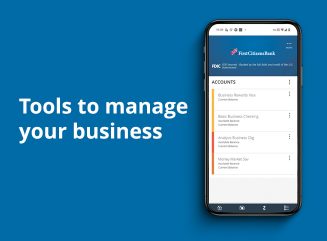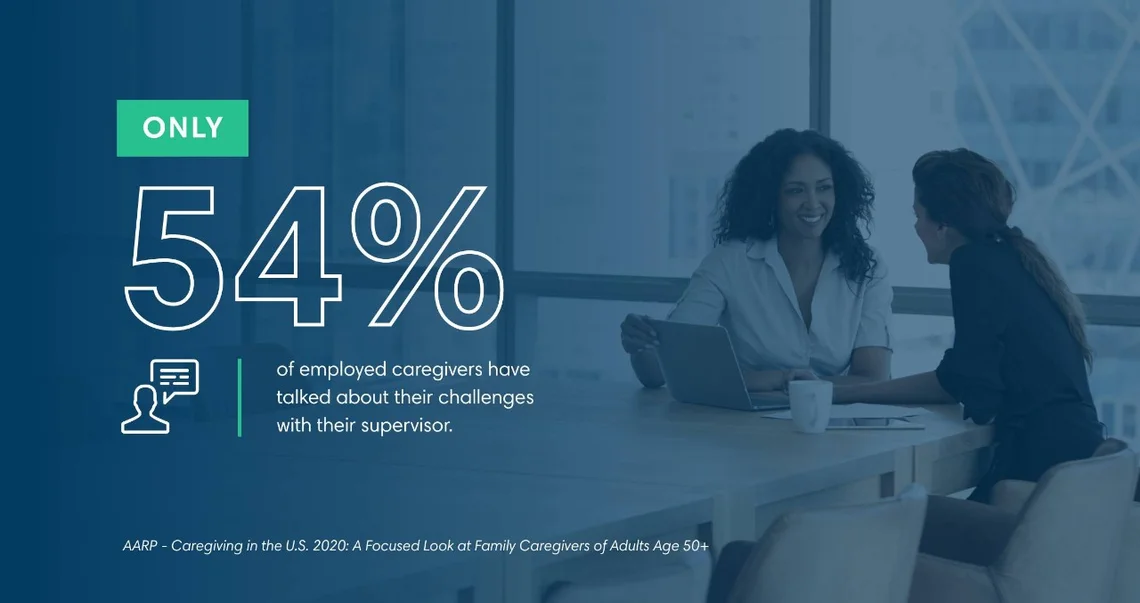
Digital banking for business
Seamlessly access all of your accounts from one place with First Citizens Digital Banking for business.

Control your portfolio
Invest how you want, when you want, in real time with Self-Directed Investing.

Digital banking for business
Seamlessly access all of your accounts from one place with First Citizens Digital Banking for business.
See how we're supporting companies
We're committed to serving companies as they expand and succeed. The proof is in our success stories.
Q4 Quarterly Market Review: Available now
The Making Sense team reviews changes in the market during Q4 2025.
More adults than ever have a new definition of work-life balance: Balancing caring for an aging parent with other parts of their lives. The impact of this new normal is being felt not only in the home—where caregivers must balance caregiving responsibilities with the time they spend with their partner and children—but also in the workplace.

According to Assisting Hands Home Care, 60% of people who provide caregiving to older adults work either full or part time—and by 2025, about half of the overall US workforce will be providing caregiving services to an older family member. This is a challenge for both employees and employers. The AARP's 2020 Companion Report (PDF) found that 60% of caregivers report one or more consequences affecting their work, including arriving late, working fewer hours, receiving a warning about their performance and taking a leave of absence.
If you're trying to find the work-life balance that accounts for both work demands and time to care for aging parents and your immediate family, you may need to find ways to add more flexibility to your life. Here are some tips that may make things go a bit more smoothly.
The COVID-19 pandemic changed the way many companies approach work. In March 2021, a Microsoft study found that 2/3 of business leaders were considering redesigning office spaces to accommodate hybrid work arrangements.
Not every job can be done remotely, but more employers today seem to understand the demands working caregivers may face and are willing to make accommodations. And according to findings from consulting firm HBL Resources, the impact of offering resources and support to caregivers often includes increased productivity and employee engagement.

However, according to the AARP report, only 54% of employed caregivers have talked about their challenges with their supervisor.
If you haven't done so already, set up a meeting with your manager to see if you may be able to work more flexible hours. If you're busy caring for loved ones more in the morning but have more support in the afternoon, perhaps you could come in a few hours later and work later into the evening. If you can't work from home on a full-time basis, your employer may be willing to let you work remotely a few days a week to help fit errands into your workday.
Experts suggest keeping your work life and caregiving responsibilities as separate as possible. For example, try not to research care facilities for your parent during work hours. The distraction may end up making you fall behind at work, which can lead to less time providing care.
Similarly, leave work at work when you go home for the day. Even before the pandemic changed everyone's work schedules, more than half of US employees said they either sent or received work-related emails outside of normal work hours. Take this time to focus on spending time with your family, and talk to coworkers so they can manage their expectations about your availability during nonbusiness hours.

Fortunately, there are strategies and resources to help you manage so you don't have to do it all alone. Consider whether it makes sense to be a part-time caregiver while a home health aide or other resource could check in on your parent while you work. If child care is a concern, look for flexible options like drop-in care.
Another relatively new option is intergenerational care, where a single facility provides care to both aging adults and young children. Research cited by Stanford University has shown that this concept can not only create cost efficiencies but also has health and well-being benefits for both older and younger participants.
If you feel like there's no way to manage your current caregiving needs and career responsibilities, consider short-term leave as an option. The Family and Medical Leave Act requires employers to allow employees to take unpaid leave for up to 12 weeks to care for an ailing family member, including aging parents.
There are certain conditions required—for example, you need to have worked at your company for at least a year, and the federal program only covers public-sector employers and private employers with 50 or more employees. Some employers may require using up all available vacation time first, but some states have also passed laws that provide more comprehensive options to caregivers.
You don't have to use all 12 weeks of leave consecutively, so if you need to take 2 weeks away from work during a moment of crisis you'd still have the other 10 weeks to use at a later date. While some companies may have their own policies, the federal program only provides for unpaid leave. If you're considering this option, talk to a banker or financial advisor about how the decision may impact your budget.
With more employees facing the challenge of balancing their careers with caring for an aging parent, many employers are working harder to provide support. Use these strategies to balance your responsibilities as much as possible—and hopefully make your life a little easier.



This material is for informational purposes only and is not intended to be an offer, specific investment strategy, recommendation or solicitation to purchase or sell any security or insurance product, and should not be construed as legal, tax or accounting advice. Please consult with your legal or tax advisor regarding the particular facts and circumstances of your situation prior to making any financial decision. While we believe that the information presented is from reliable sources, we do not represent, warrant or guarantee that it is accurate or complete.
Third parties mentioned are not affiliated with First-Citizens Bank & Trust Company.
Links to third-party websites may have a privacy policy different from First Citizens Bank and may provide less security than this website. First Citizens Bank and its affiliates are not responsible for the products, services and content on any third-party website.
First Citizens Bank & Trust Company is a Member FDIC and an Equal Housing Lender icon: sys-ehl.
NMLSR ID 503941

Treasury & Cash Management
Electronic Bill Presentment & Payment
Investment & Retirement Services
Community Association Banking
Equipment Financing & Leasing
Credit Cards
Merchant Services
Email Us
Please select the option that best matches your needs.
Customers with account-related questions who aren't enrolled in Digital Banking or who would prefer to talk with someone can call us directly.